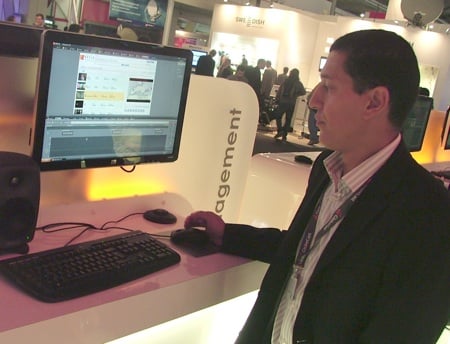The latest version of Netia’s audio editing software was on show at IBC this year, revealing a great leap forward for Netia users who want to do more with the software to generate content for websites and digital radio as well as for their radio shows.
Netia users have been waiting for the next generation of software for some time, hoping to use it to add metadata to prerecorded interviews and work with video as well as audio. The system now allows that. It also automates the process of extracting multiple formats for use on different platforms.
The latest upgrade integrates Netia’s Radio Assist software, the type used by the ABC and SBS, with other Netia products which work with video. Another product, the Netia Workflow Engine mixes out the content into many formats from jpeg, mpeg, mp3, and wav to xml data files used for RDS and digital radio displays.

The familiar ‘snipped editor’ window is the interface for editing, but files can now be dragged from shared sources or ingested into the system using a web page like menu system. Click the picture below to view a video demo.

The thing that station engineers, operations managers and program directors will like most is that they can set output paths easily using Workflow Engine with a ‘mind map’ like display that lets you draw lines from the source to multiple outputs. This means you can tell the system that every time, for example, a news bulletin audio file (and its associated pictures and data) is played, it should put the audio and the associated picture on a certain web page, stream the audio to a mobile phone app, feed the story title text to the digital radio screen, and archive it to the main storage drive.

Many presenters and journalists have found their workloads increasing in recent years, as they are required to manually manipulate pictures and text as well as audio by using many different software programs. They used Photoshop to resize pictures, a xml text edit program to work on the data, and the audio editor to work on the sound file. This system does it all at once, resizing pictures to set sizes to suit the web page and extracting the original meta data to generate text files. Overworked producers and journos will be glad when this upgrade is installed in their stations.
The software does cost more. Netia will integrate its new products to the old audio editor for a price, which clients have to ask about separately because installed systems are made to order and are different in each station.
A full swf demo explaining all the features of the editing side of the system is available at the link below.

